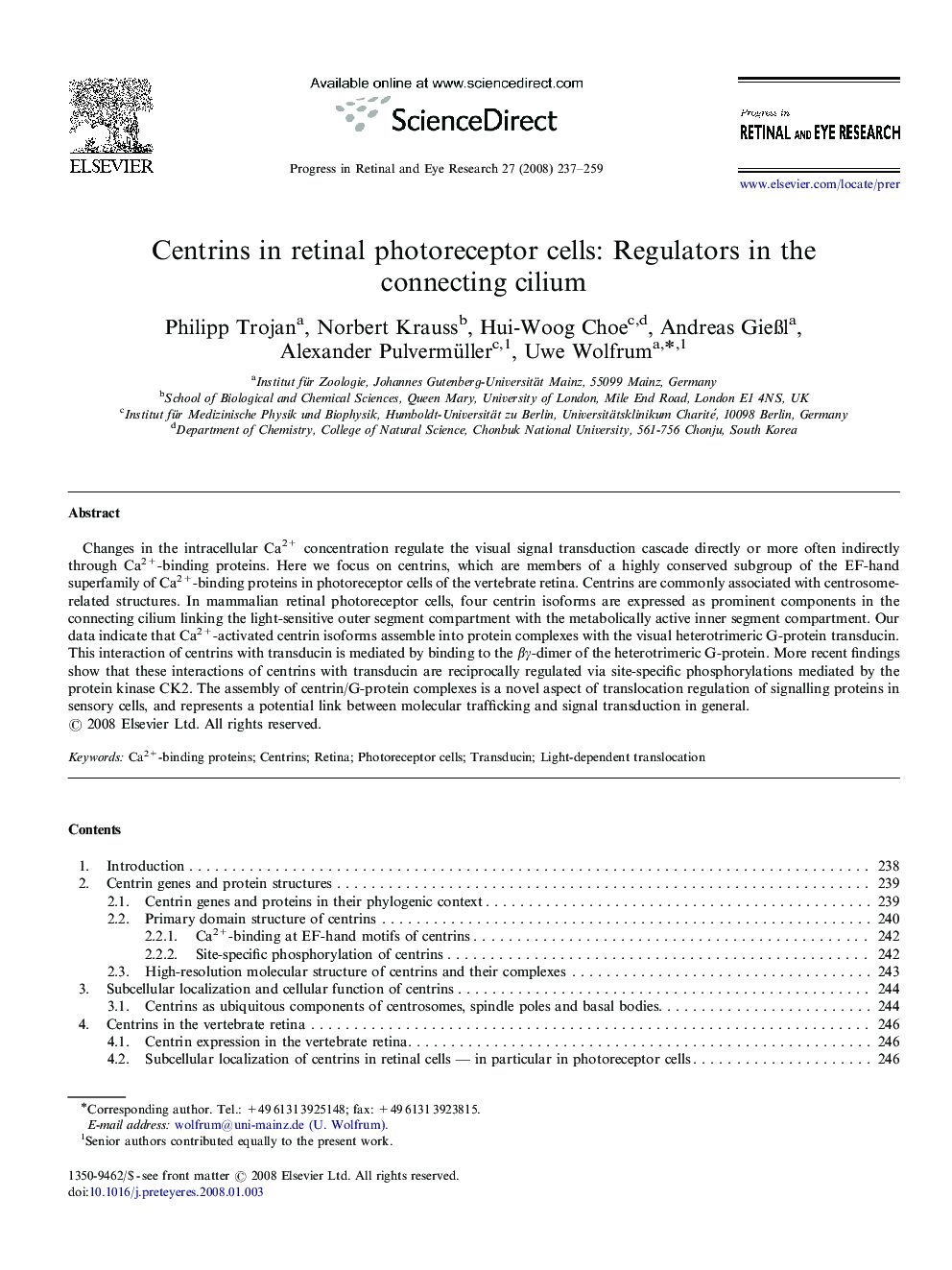| Article ID | Journal | Published Year | Pages | File Type |
|---|---|---|---|---|
| 4032157 | Progress in Retinal and Eye Research | 2008 | 23 Pages |
Changes in the intracellular Ca2+ concentration regulate the visual signal transduction cascade directly or more often indirectly through Ca2+-binding proteins. Here we focus on centrins, which are members of a highly conserved subgroup of the EF-hand superfamily of Ca2+-binding proteins in photoreceptor cells of the vertebrate retina. Centrins are commonly associated with centrosome-related structures. In mammalian retinal photoreceptor cells, four centrin isoforms are expressed as prominent components in the connecting cilium linking the light-sensitive outer segment compartment with the metabolically active inner segment compartment. Our data indicate that Ca2+-activated centrin isoforms assemble into protein complexes with the visual heterotrimeric G-protein transducin. This interaction of centrins with transducin is mediated by binding to the βγ-dimer of the heterotrimeric G-protein. More recent findings show that these interactions of centrins with transducin are reciprocally regulated via site-specific phosphorylations mediated by the protein kinase CK2. The assembly of centrin/G-protein complexes is a novel aspect of translocation regulation of signalling proteins in sensory cells, and represents a potential link between molecular trafficking and signal transduction in general.
